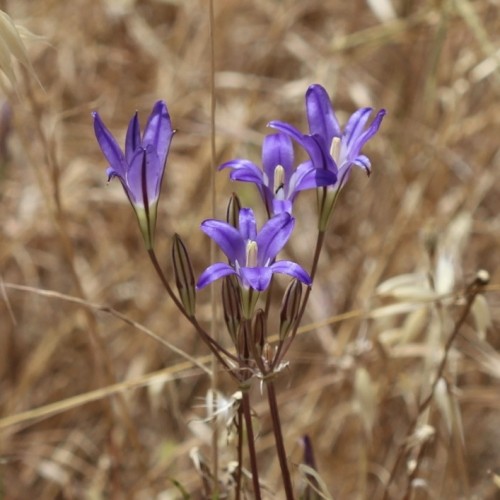
Harvest Brodiaea
Brodiaea coronaria subsp. coronaria
Watering:
Minimal
Hardiness Zone:
Sun:
full sun,part shade
Leaf:
Yes
Growth Rate:
Low
Drought Tolerant:
Yes
Salt Tolerant:
Yes
Invasive:
Yes
Care Level:
Low
watering
Little Quaking Grass grows best in full sunlight and should be watered frequently during dry times. Depending on the climate and soil conditions, watering should be done about once a week in dry times. In cooler, wetter seasons, watering needs may be less frequent. To help conserve water, wait until the top inch of soil is dry before watering. During hot summer periods, watering twice a week is recommended, applying enough water so that it runs out the bottom of the container. Overwatering can lead to root rot, so being careful to not underwater or overwater is essential.
sunlight
Little Quaking Grass prefers full sun to partial shade and should receive at least 4 hours of direct sunlight per day for optimal growth. This species grows best in cool climates, meaning it will do better with cooler temperatures and shorter periods of sunlight when compared to other plants. Generally, Little Quaking Grass should receive 8 to 10 hours of sunlight per day during summer months and 4 to 6 hours of sunlight during winter months.
pruning
Little Quaking Grass benefits from a light pruning in late spring or early summer. Focus on removing any expired stems or foliage, as well as any that appear to be in poor health. Trim each stem back to within 1 or 2 inches of the base and remove any dead leaves by hand. Any stems that have grown too long can be cut back to within 6 inches of the ground. This will help encourage healthy new growth and ensure that the plant is looking its best.
